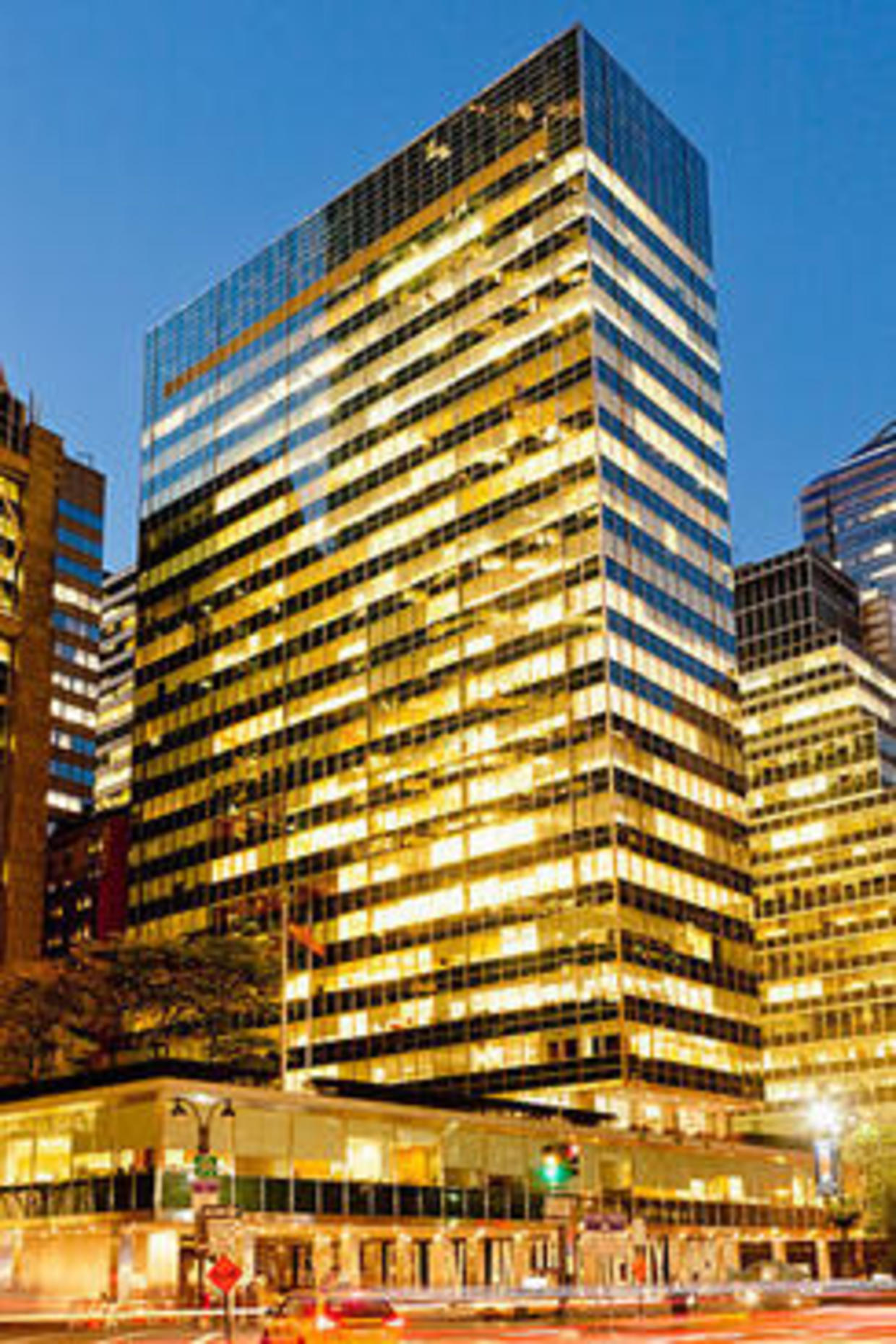Table Of Content

Through the restoration work, private and public spaces have been provided with infrastructural upgrades, including a DOAS system that improves energy performance while maximizing ceiling height. The upgrades also include a dedicated outdoor air system, new chillers, HEPA filters, and an automated building management system. Additionally, the plaza has received a cast-in-place concrete finish matching the design of the original exterior paving. The recognizable stainless-steel columns have also been refinished, as has the Champlain black marble. Long-lasting LED lights have replaced the original lighting while maintaining its aperture and image. The design of the Lever House offsets the tall office tower from the horizontal base.
vision, designed
With its large outdoor space and air conditioned office floors, Lever House was lauded for bringing unprecedented access to light and air to the 1,200 employees of Lever Brothers. When it was completed, Lever House was among the first skyscrapers to use glass curtain walls, marking a definitive shift from the aesthetic of masonry buildings. Consequently, it gained landmark status just 30 years after completion, in 1982, demonstrating a change of attitude towards the preservation of modern heritage. In 2001, SOM began the renovation of the facades, using high-performance materials while preserving the original architectural image. The construction of Lever House changed Park Avenue in Midtown from an avenue with masonry apartment buildings to one with International-style office buildings. Lever House was intended solely for Lever Brothers' use, and its small size had prompted proposals to redevelop the site with a larger skyscraper.
Paul Rudolph’s modernist Modulightor Building may become NYC landmark
Most of the Lever House ground floor is open plaza; the glass-enclosed portion includes an art gallery open to the public. Most visibly to the public, the ground-level plaza beneath the tower — which Clark called “historically dark and dreary in winter” — is being redesigned with new lighting and a new ceiling to make it attractive year-round. Many of those planned amenities will be found in Lever Club, a new hospitality space on the third floor of the building that will be shared among tenants. Originally the site of a recreation room and restaurant for Lever Brothers, the area had since been converted to office space. Even as glass and steel took over Manhattan, Lever House remained an icon in the history of architecture and urbanism. In the 1980s, Jacqueline Kennedy Onassis personally lobbied city politicians to prevent its demolition.
More Projects
The designers at Marmol Radziner were tasked with transforming what was once a staff cafeteria into a social club-like lounge for tenants. The lounge opens to a roof terrace with landscaping by Reed Hildebrand that includes a grove of birch trees. The building staved off a demolition threat in the 1980s, which led to landmarking in 1982; despite recognition that it was a significant structure, it was plagued by financial challenges and steadily began to decay. The facade leaked, the terrazzo pavers and floors cracked, and 70 years of wear and tear dulled the interiors.

New York’s iconic Lever House renovated by SOM - Global Construction Review
New York’s iconic Lever House renovated by SOM.
Posted: Wed, 22 Nov 2023 08:00:00 GMT [source]
In 1997, Unilever relocated most of its offices out of Lever House, and Aby Rosen's RFR Realty took over the building. After SOM renovated the building between 2000 and 2001, Lever House was used as a standard office building with multiple tenants. The $100 million restoration of Park Avenue’s famous Lever House tower by Skidmore, Owings & Merrill (SOM), the iconic building’s original architects, has been completed. The project revitalized the tower for the 21st century while preserving the distinct architectural aesthetic the building has expressed since it was first completed in 1952.
Image gallery
In 2001, SOM – now equipped with five decades of expertise in high-performance facade design technology – returned to reestablish Lever House’s original grandeur. Working closely with the Landmarks Preservation Commission, SOM restored the building while maintaining the integrity of the original design. The new facade, with concealed aluminum glazing channels, stainless steel mullions and caps, and new panes of heat-strengthened PPG solex glass, is designed to sustain the 20th-century icon through the 21st century. Since it was the headquarters of a soap business, the use of an all-glass facade would make the building easy to clean as well as maintain its glimmer on the skyline. A system was created with a rooftop window-washing gondola that was able to move on tracks to clean the glass. The curtain wall is also completely sealed without operable windows to prevent the passage of dirt from the city into the building, and the heat-resistant glass helped reduce cooling costs.
Lever House was one of the first, and most recent, modern buildings to be designated a New York City Landmark in 1982. The city’s Landmarks Preservation Commission (LPC) decided to add the building to its register due to concerns that it could potentially be replaced with a larger skyscraper, according to The Architect’s Newspaper. SOM thoughtfully restored the building’s public and private spaces and installed key infrastructure upgrades, including a new energy-efficient dedicated outdoor air system (DOAS) to improve Lever House’s energy performance.
Two decades after the facade work, SOM returned to Lever House to complete its restoration under the leadership of developers Brookfield Properties and WatermanCLARK, who assumed control of the tower in 2020. The project revitalizes and preserves the landmark structure with completely updated plaza and outdoor spaces, a fully restored lobby, and brand new mechanical systems throughout the building that improve its energy efficiency. The tower’s third floor and 15,000 square feet of terraces have been restored and transformed into The Lever Club, an indoor-outdoor hospitality suite with interiors designed by Marmol Radziner and services managed by Sant Ambroeus Hospitality Group. This renovation and restoration, completed in 2023, revitalizes Lever House and makes it once again Park Avenue’s premier boutique office building. Lever House, designed by Gordon Bunshaft of Skidmore, Owings and Merrill and located at 390 Park Avenue in New York City, is the quintessential and seminal glass box International Style skyscraper. For better or worse, in 1952, Lever House marked a turning point in the International Style away from the idealism of the European avant-garde toward the commercialism of corporate America.
SOM Completes Restoration of New York’s Lever House, Seven Decades After Originally Designing It
"Lever House introduced the International Style to America and transformed the design of urban towers around the world," explained SOM partner Chris Cooper. SOM's aim for the restoration is to preserve Lever House's original appearance, while also enhancing its sustainability performance to meet modern-day standards. During the 2023 Chicago Architecture Biennial, Skidmore, Owings & Merrill (SOM) presented an eco-friendly alternative to traditional concrete, crafted from naturally carbon-absorbing microalgae subjected to a photosynthetic bio-cementation process. The internationally recognized office has also unveiled the design for a new net-zero campus located on Governors Island, New York, planned to become an anchor institution for the development of new climate solutions. It gives us the opportunity to do what we’re doing, which we couldn’t’ do in a building full of tenants,” Clark said. A $100 million redevelopment is bringing new life — and post-pandemic attention to employees’ needs and concerns — to the iconic 1950s landmark Lever House on Park Avenue between East 53rd and East 54th streets.
The architects worked closely with Integrated Conservation Resources to create a space that rejuvenates the landmarked building’s original appearance from 1952. In the original arrival area, the terrazzo flooring was repaired and refinished, and the glass mosaic in the elevator vestibule was thoroughly cleaned. Landscape architecture firm Reed Hildebrand reimagined the landscape program across the property, utilizing native plantings throughout. The project’s centerpiece is an indoor-outdoor, tenants-only hospitality suite on the third floor designed to exploit market demand for wellness and collaborative-work facilities. By the 1990s, harsh weather conditions and the limitations of midcentury materials had dimmed the shine of Lever House’s famed curtain wall.
Dezeen Agenda features SOM's restoration of New York's Lever House - Dezeen
Dezeen Agenda features SOM's restoration of New York's Lever House.
Posted: Tue, 21 Nov 2023 08:00:00 GMT [source]
There is about 260,000 square feet (24,000 m2) of interior space in Lever House, making it much smaller than comparable office buildings in Midtown Manhattan. Lever House is a 307-foot-tall (94 m) office building at 390 Park Avenue in the Midtown Manhattan neighborhood of New York City. Constructed from 1950 to 1952, the building was designed by Gordon Bunshaft and Natalie de Blois of Skidmore, Owings & Merrill (SOM) in the International Style, a 20th-century modern architectural style. It was originally the headquarters of soap company Lever Brothers, a subsidiary of Unilever. Lever House was the second skyscraper in New York City with a glass curtain wall, after the United Nations Secretariat Building.

No comments:
Post a Comment